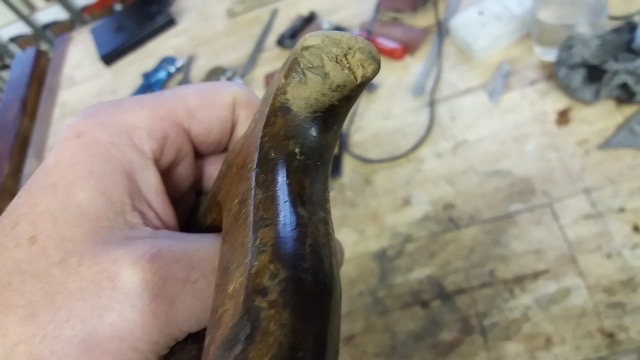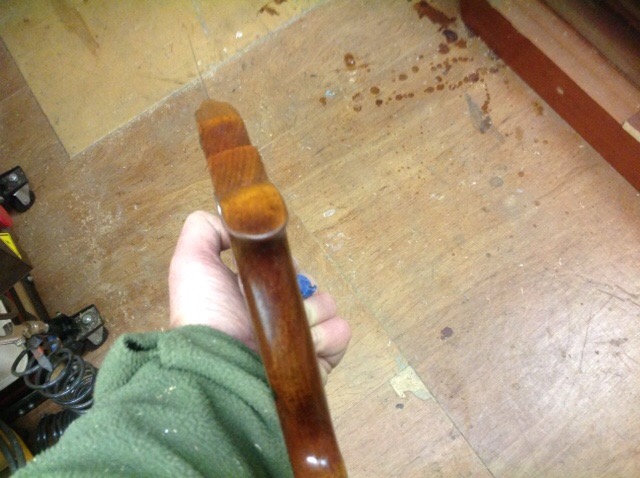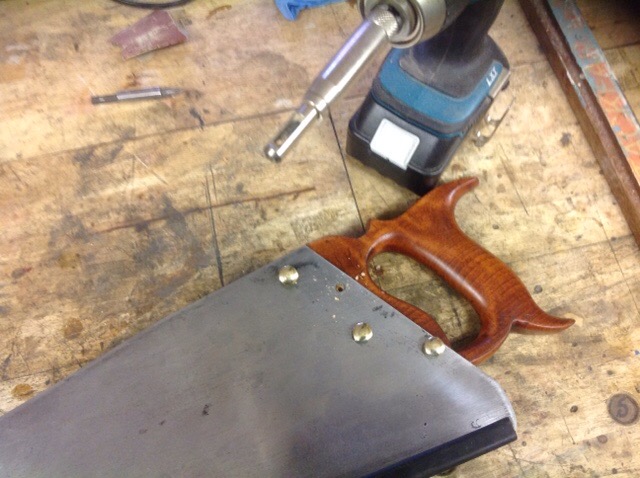Bluekingfisher
Established Member
Here is another saw I recently brought back from near death. It is a Disston 6 PPI crosscut saw with a 26" plate. Although in a rough state the plate was good and straight with little pitting. The handle on the other hand had seen some heavy wear. I never really like the " block" shape of the handle so I took the time to reshape it to fit my hand with a little carving for aesthetic.



The first job was to disassemble the saw, a fairly straight forward process.

Getting started in stripping the old finish from the handle, then a little shaping with hand tools to suit my hand.

I cleaned the plate with wet and dry paper then buffed it on a polishing wheel. Once done I set about jointing sharpening and setting the teeth.
I managed to miss a tooth on the first pass, (should have gone to Spec Savers) not to worry, move on.
 .
.
I use one of these for assisting with the angles invaluable, can't go wrong.

I kept the tooth geometry fairly standard for general cross cutting. A 15 degree rake with 25degrees of fleam.
A little setting and the plate was done.
 .
.
I applied a couple of coats of stain until I achieved a colour I like then applied several coats of an oil/poly mix. I think about 6 or 7 coats. I let the finish "cook for a couple of days then reassembled the saw.



The first job was to disassemble the saw, a fairly straight forward process.

Getting started in stripping the old finish from the handle, then a little shaping with hand tools to suit my hand.

I cleaned the plate with wet and dry paper then buffed it on a polishing wheel. Once done I set about jointing sharpening and setting the teeth.
I managed to miss a tooth on the first pass, (should have gone to Spec Savers) not to worry, move on.

I use one of these for assisting with the angles invaluable, can't go wrong.

I kept the tooth geometry fairly standard for general cross cutting. A 15 degree rake with 25degrees of fleam.
A little setting and the plate was done.

I applied a couple of coats of stain until I achieved a colour I like then applied several coats of an oil/poly mix. I think about 6 or 7 coats. I let the finish "cook for a couple of days then reassembled the saw.






































